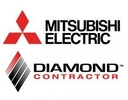-
Air Conditioning
-
Heating
-
Plumbing
-
Electrical
-
Water Well
- New Construction
-
Commercial
-
About Us
-
Contact Us
VRF vs. VRV Air Conditioning Systems: What’s The Difference?
How does your HVAC work for you? You set it at a temperature of your choosing, it cools or heats your home to that temperature, then it cycles back down, right? Then, when the house starts to warm up or cool down again, it cycles back on. Pretty simple, isn’t it? Well, this simple mode of operation is certainly a tried and true way in which to regulate the temperature in one’s home. Like anything else, though, we've seen some advancement in technology when it comes to HVAC system operation over the years.
If you’ve been researching your heating and air conditioning options lately, then you have probably come across systems using VRV or VRF technology. The benefits associated with this technology are no doubt enticing, as they include improved comfort at a lower operating cost. Still, there may be some confusion about these terms and what they mean for your HVAC system in Boerne, TX. Keep reading to learn more about VRV/VRF technology, and why you may want to incorporate it into your home cooling setup, or contact us now to get in touch with an expert.
What Do VRF and VRV Stand For?
VRV stands for "Variable Refrigerant Volume," while VRF stands for "Variable Refrigerant Flow". So what do these to designations mean? For starters, they actually mean the same thing!
VRV is term copyrighted by Daikin, one of the true industry leaders in HVAC equipment and technology. VRF refers to the same basic technology used in those systems manufactured by other companies—Fujitsu, for one, makes some great variable refrigerant flow systems.
Now that you know what the terms actually refer to, of course, you’re probably wondering why you should care. After all, as far as you remember, your current HVAC system or heat pump does not claim to use such technology—and it is doing just fine. That’s the point, though. We believe that you deserve more than "just fine" when it comes to your comfort!
Why Invest in VRF/VRV Technology?
Let’s consider how it is that a typical split central air conditioner operates in order to cool a home. Refrigerant is evaporated in the indoor evaporator coil, and that allows it to draw heat out of the air passing through it. The hot refrigerant then goes outside, where it is compressed and its heat is released. Meanwhile, your air handler goes about distributing the cooled air throughout the house.
However, most homes are not one big, open space. While ductless AC systems and zone controlled central systems are available in order to help with the challenges that uneven temperatures throughout homes create, the VRF/VRV system really takes it to the next level. These systems not only use multiple indoor units installed throughout the house, but also modulate their refrigerant flow to meet the unique needs of each specific area.





















